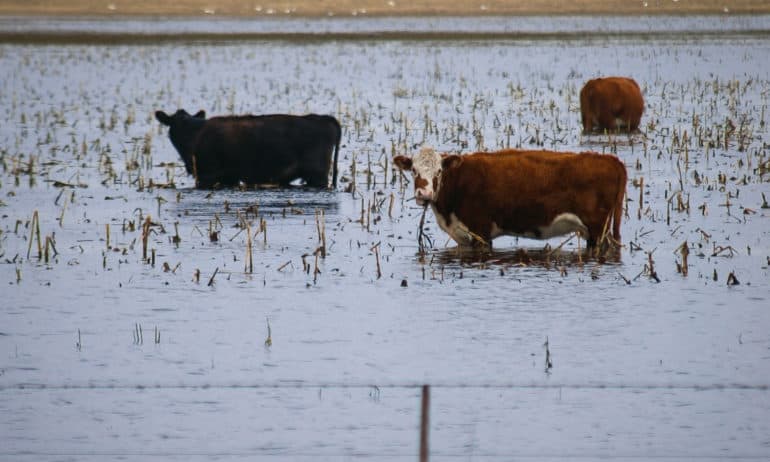Hurricane Harvey, the most powerful hurricane to hit the United States in more than a decade, is expected to have a significant impact on Texan farmers, ranchers, and Texas’s agricultural export industry. With more than 50 inches of total rainfall already recorded, water damage to grain and vegetable crops, food warehouses, and transportation routes has begun to affect the food supply. Food and water can easily become contaminated by floodwaters or spoiled after a power outage, with potentially hazardous impacts on public health.
“I can’t think of a crop that is designed to handle four feet of rain in a short period of time,” Mike Steenhoek, Executive Director of the Soy Transportation Coalition, told CNBC.
Texas is the nation’s largest producer of cattle and cotton and is responsible for exporting almost one-fourth of the nation’s wheat and a significant portion of U.S. corn and soybeans. Texas ranchers have been forced to relocate cattle to higher ground, yet there are concerns about access to feed and fresh water as well as exposure to disease and predators. Some ranchers, however, are currently unable to access and move their livestock.
“It’s been difficult for ranchers in the area to get onto the pastures and assess damage because some roads are impassable and it’s still raining,” Jeremy Fuchs, spokesman for the Texas and Southwestern Cattle Raisers Association, told Bloomberg.
State and industry officials are currently unable to provide official numbers on estimated killed or injured livestock, but a recent update from the South Texas Cotton and Grain Association predicts crop losses in the state could reach up to US$150 million, potentially more.
The Texas Department of Agriculture (TDA) said in a statement that cotton farmers were some of the hardest-hit agricultural producers, with hundreds of cotton modules blown apart by gale-force winds and many more lying wet in fields. While the majority of wheat, corn, and rice crops have been harvested for the year, storage bins may have undergone extensive wind and water damage, leading to more crop losses. Wheat, soybean, and corn exports have been halted as Texas ports made safety preparations for Hurricane Harvey.
There are also significant public health dangers and food contamination risks from Harvey’s floodwaters. A notice from the U.S. Food and Drug Administration (FDA) warned that crops, fresh fruits and vegetables, and refrigerated and frozen foods exposed to flood waters should not be eaten and should be disposed of instead. Food banks are also working to assist local Red Cross shelters with food and other day-to-day items. The Federal Emergency Management Agency (FEMA) has already provided more than 5 million emergency meals.
FEMA’s Hurricane Harvey resource page provides up-to-date information on the federal response to Hurricane Harvey, key safety tips, and guidelines for making contributions and donations. Texas Agriculture Commissioner Sid Miller has also activated the State of Texas Agriculture Relief Fund (STAR Fund) to assist farmers and ranchers affected by Hurricane Harvey.
“Every day, we depend on farmers and ranchers to provide our families with the healthy food and warm clothes that sustains our lives, and now is the time for Texas producers to lean on us. This is not a handout, rather it’s a helping hand,” said Commissioner Sid Miller of the STAR Fund.
So far, the complete impacts of Hurricane Harvey remain unknown, and efforts to further understand the scale and response to the agricultural community is ongoing. Farmers and ranchers will require continued support when they are able to return to their properties and begin assessing damages.







